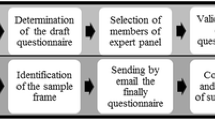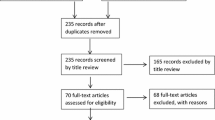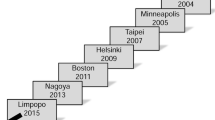Abstract
Nanomaterials are now present in many consumer products, including textiles. They offer new technical and commercial opportunities but may pose risks to the consumers and to the environment and raise occupational health and safety concerns. The control banding approach for occupational risk management applied to engineered nanomaterials, according to ISO/TS 12901-2:2014, is a pragmatic approach useful for the control of workplace exposure to possibly hazardous agents with unknown or uncertain toxicological properties and for which quantitative exposure estimations are lacking. Nanomaterials are now often applied to textiles by means of textile finishing; in the present paper, a case study is presented in a finishing company involving two chemical finishes involving nanomaterials: mosquito repellency and antibacterial finish. The risk analysis concerned mainly four workers involved either in the preparation of the finishing baths and on the conducting of the stenter frame. Following the application of control banding method, measures to mitigate risks have been envisaged: appropriate ventilation and use of adequate personal protective equipment. Hazards related to one of the chemicals are higher and require also the use of a closed booth and a smoke extractor. The safety data sheets are the first source of information on how to handle and care for a particular product containing nanomaterials, but the information provided is still non-existent or very limited, in terms of the specific hazards and risks of nanomaterials.
Access provided by Autonomous University of Puebla. Download chapter PDF
Similar content being viewed by others
Keywords
1 Introduction
Nanotechnology became in the recent years an important tool to obtain innovative effects in different industrial sectors, ranging from food to transport. There are nowadays in the market many consumer products which incorporate nanomaterials, including garments and other textile products. In fact, Properties of nanoscale materials can differ from the properties of individual atoms, molecules, and bulk matter, allowing to create improved materials, devices, and systems that exploit new chemical, physical, mechanical and biological properties. The differences between materials at nanoscale compared to macroscale may also mean that they interact differently with the biological system. In fact, they may be more readily absorbed or even overcome more rapidly the physiological barriers of the body.
The regulating authorities recently started to put emphasis on the potential risks for human health, both in terms of consumer exposure and of occupational safety and health, related to the exposure of workers involved in manufacturing, processing and handling of consumer goods containing nanomaterials. Exposure to engineered nanomaterials has been associated with a number of health effects including pulmonary inflammation, genotoxicity, carcinogenicity and circulatory effects. In addition, the increasing use of nanomaterials, including for industrial purposes, raises specific concerns regarding their disposal at the end of their life cycle with the unavoidable release to the environment that may lead to indirect human exposure [1].
According to Purohit et al. [2], nanomaterials themselves constitute a new generation of toxic chemicals. As particle size decreases, in many nanomaterials the production of free radicals increases, as does toxicity. The number of commercial products and the number of workers potentially exposed to engineered nanomaterials is growing, as is the need to evaluate and manage the potential health risks [3].
Table 1 presents some hazards/sources of risk in occupational exposure of workers to nanomaterials.
The following general principles are suggested for the elimination or reduction to a minimum of risks associated with hazardous chemical agents [4]: design and organisation of systems of work at the workplace; provision of suitable equipment for work with chemical agents and maintenance procedures which ensure the health and safety of workers at work; reducing to a minimum the number of workers exposed or likely to be exposed; reducing to a minimum the duration and intensity of exposure; appropriate hygiene measures, reducing the quantity of chemical agents present at the workplace to the minimum required for the type of work concerned; and suitable working procedures including arrangements for the safe handling, storage and transport within the workplace of hazardous chemical agents and waste containing such chemical agents.
These principles should particularly be adopted for chemicals containing nanomaterials. The hierarchy of risk management controls options should be the following [5]:
-
Isolate or Enclose: operations which involve the likely release of MNMs (manufactured nanomaterials) into the air should be performed in contained installations or in facilities that can be operated remotely from a protected area.
-
Engineering Control: processes where there is a potential for creating dusts or aerosols of MNMs should be carried out in areas with efficient local exhaust or extraction ventilation.
-
Administrative Control: working procedures and staff assignment to tasks should be developed so as to ensure safe handling of MNMs; adequate training and information should be provided to individual workers; an Emergency Management Plan should be established.
-
Personal Protective Equipment (PPE): PPE should be regarded as a “last resort” control measure or a supplemental option to be used in conjunction with other measures.
It is essential to know if the chemicals used contain nanomaterials. Some products emphasize this information in advertisements, as this may offer a technical or commercial advantage but for some other products manufacturers might not want to openly advertise this, either for confidentiality reasons or to avoid raising public concern. It can therefore be difficult to tell with certainty if a particular substance or product contains nano-forms [5]. It is essential to know if there are nanomaterials present in the chemicals used. This information should be found either on the product labels, in the safety data sheets and in the technical specifications. Unfortunately in many cases the safety data sheets do not include specific information concerning the health and safety risks related to the presence of nanomaterials. The current regulatory framework does not yet guarantee the traceability of the market and a unique regulation about the indication of the presence of nanomaterials on labels [6].
The textile industry is already an important user of nanotechnologies and there are a significant number of “nanotextiles” in the market. In most of the cases, special effects are obtained by the application of chemical finishes which incorporate nanomaterials. The most common nanomaterials used are Silver (for its antibacterial properties) and Titanium Dioxide (especially for UV protection and self-cleaning properties), but many others can be used, such as nanoclays, which grant flame retardancy and abrasion resistance [7]. The application of these chemicals in the textile finishing industry poses health and safety concerns for the workers, namely those involved in the handling of the chemicals from the warehouse until the textile finishing machines. A case study will be presented in this paper involving two types of finishes in a Portuguese textile finishing company.
2 Materials and Procedures
2.1 Control Banding
The control banding approach was originally developed by the pharmaceutical industry as a way to safely work with new chemicals that had little or no toxicity information. It is a pragmatic approach which can be used for the control of workplace exposure to possibly hazardous agents with unknown or uncertain toxicological properties and for which quantitative exposure estimations are lacking, which is the case of nanomaterials.
The major challenge in developing a banding control approach for nanomaterials is to decide what parameters to consider and what criteria are relevant to associate a nano-object with a control band, and what operational strategies to use. It is the producer or importer’s responsibility to determine whether or not the product contains nanomaterials and to provide relevant information in the safety data sheets, labels, etc., according with existing regulations. In this way, companies and employees can use this information to identify hazards and implement appropriate controls.
ISO has developed a Technical Specification ISO/TS 12901-2:2014 for the use of the control banding approach in the management of occupational risks applied to engineered nanomaterials [8]. Control banding can be particularly useful for the risk assessment and management of nanomaterials, given the level of uncertainty in work-related potential health risks from nano-objects as well as their aggregates and agglomerates, even if they are greater than 100 nm.
The Control Banding process, according to ISO/TS 12901-2:2014, includes the following elements:
-
Information gathering. In case there is little or no information to guide decisions on the potential for a particular hazard or exposure, “reasonable worst-case assumptions” should be used along with management practices appropriate for those options.
-
Assignment of the nano-objects to a hazard band. Hazard banding consists in assigning a hazard band to nano-objects on the basis of a comprehensive evaluation of all available data on this material, taking into account parameters such as toxicity, in vivo biopersistence and factors influencing the ability of particles to reach the respiratory tract, their ability to deposit in various regions of the respiratory tract, their ability to elicit biological responses.
-
Description of potential exposure characteristics. Exposure banding consists in assigning an exposure scenario at a workplace to an exposure band, taking into account the physical form and amount of the nano-object, dust generation potential of processes and actual exposure measurement data.
-
Definition of recommended work environments and handling practices (control banding). The implementation of control banding can be made in two ways: proactively or retroactively. In the proactive approach, used in the present study, recommended work environments and handling practices may be defined on the basis of hazard banding as well as of fundamental factors mitigating anticipated exposure potential, e.g. propensity of the material to become airborne, the type of process and amounts of material being handled.
-
Evaluation of the control strategy or risk banding. Periodic and as-needed reviews should be implemented to ensure that the information, evaluations, decisions and actions of the previous steps are kept up-to-date.
Table 2 presents the hazard bands, according to ISO/TS 12901-2:2014. Details of the limits of each hazard band are presented in the hazard band allocation of the document [8].
In terms of Exposure Banding, ISO/TS 12901-2:2014 proposes four levels, from EB 1 (lowest exposure) to EB 4 (highest exposure). For manufacturing/production processes involving wet chemistry, as was the case studied, the levels of exposure banding suggested are EB 1 or EB 2. In case of nano-objects in suspension in a liquid, the choice on the quantity of depends on the amount of liquid and nano-object involved, as well as the potential of aerosol generation.
The measures proposed for the mitigation of risk are presented in Table 3.
ISO/TS 12901-2:2014 proposes the following control band matrix as a result of hazard band and exposure potential band, as presented in Table 4.
2.2 Textile Finishing
The case study presented in this paper concerns textile finishing. Data were collected in a Portuguese textile finishing company, especially devoted to knitted fabrics. This company applies for specific customers textile finishes which incorporate nanomaterials. Two chemical finishes studied have been identified. According to the safety data sheets, the hazard statements (H) and precautionary statements (P), according to the CLP Regulation (Regulation EC No 1272/2008), are the following:
Product A (Mosquito Repellent)
H319—causes serious eye irritation. P233—keep container tightly closed. P261—avoid breathing dust/fume/gas/mist/vapours/spray. P305 + P351 + P338—if in eyes, rinse cautiously with water for several minutes; remove contact lenses, if present and easy to do; continue rinsing. P337 + P313—if eye irritation persists, get medical advice/attention. P403 + P233—store in a well-ventilated place, keep container tightly closed. P501—dispose of contents/container according to local/regional/national/international legislation.
Product B (Antibacterial)
H302—harmful if swallowed. H318—causes serious eye damage. H332—harmful if inhaled. H410—very toxic to aquatic life with long lasting effects. P280—wear protective gloves/protective clothing/eye protection/face protection. P273—avoid release to the environment. P301 + P312—if swallowed, call a poison centre or doctor/physician if you feel unwell. P305 + P351 + P338—if in eyes, rinse cautiously with water for several minutes, remove contact lenses, if present and easy to do, continue rinsing. P501—dispose of contents/container to approved incineration unit.
Both chemicals are delivered in cans in a suspension in aqueous form. Note that neither of the product information or safety data sheets mentions specifically that these two products contain nanomaterials, although this information is indirectly provided by the suppliers. In one of the cases, the information states that “(…) the remaining composition of the product is kept secret by the company”.
The two chemical finishes are applied to cotton fabrics by padding followed by heat setting in a stenter frame. The risk analysis concerned mainly four workers involved either in the preparation of the finishing baths (starting on the warehouse of chemicals) and on the conducting of the stenter frame.
The operations performed by the four workers involved in the manipulation and application of these chemicals included: opening of the cans, weighing the quantity needed for each batch, transportation of the chemicals to the production process, transfer of the chemicals to the stenter frame (automatic dispenser), preparation and mixture, with water addition, and finally development of the finishing process in the stenter.
3 Results
Table 5 presents the results of the control banding process applied to the different tasks performed by the workers involved in handling product A (mosquito repellent).
For the product A (mosquito repellent), the hazard band HB B has been chosen, taking into account that this chemical can cause serious eye irritation. Exposure band EB 2 has been chosen because this chemical is in a suspension form, with low potential of aerosol formation but used in quantities higher than 1 L [8]. In the production phase, the exposure of workers to the nanomaterials is lower, so EB 1 has been chosen. The corresponding control band, evaluated according to Table 5, is CB 1 (natural or mechanical general ventilation).
For product A, he company has already implemented all measures suggested by this study, ISO/TS 12901-2:2014, and the product safety data sheet. For exposure control measures/PPE, workers wear protective glasses, 0.7 mm thick butyl rubber gloves, protective clothing and respiratory mask when vapours are released.
Table 6 presents the results of the control banding process applied to the different tasks performed by the workers involved in handling product B (antibacterial finish).
For the chemical B, the hazard band HB C has been chosen, taking into account that this chemical can cause serious eye damage, as well as other health problems. Exposure band EB 2 has been chosen because this chemical is in a suspension form, with low potential of aerosol formation but used in quantities higher than 1 L [8]. In the production phase, the exposure of workers to the nanomaterials is lower, so EB 1 has been chosen. The corresponding control band is CB 3 (enclosed ventilation: ventilated booth, fume hood, closed reactor with regular opening), CB2 in case of the production process (local ventilation: extractor hood, slot hood, arm hood, table hood, etc.).
For product B, the company has implemented the measures suggested by the product safety data sheet. For exposure control measures/PPE, workers wear protective glasses, nitrile rubber gloves, protective clothing and respiratory protection mask when vapours are released. The other measures that have been suggested by this study, according to ISO/TS 12901-2:2014, were not yet implemented.
4 Conclusions
From the present work resulted the suggestion of control measures for risk mitigation by the use of the control banding approach, based on the analysis of the work stations and the information given by the suppliers. It has been recommended to the company to carry out exposure measurements to chemicals containing nano-scale materials at the workplace and compare against normative and legal limits.
The main problem which has been faced is the lack of information for the products used in the safety data sheets, namely in terms of the concrete nanomaterials present and the corresponding specific hazards and risks.
With the development of a specific REACH registration system for nanomaterials, it is recommended that the suppliers of chemicals which incorporate nanomaterials include more information on the hazards and measures for risk mitigation in the safety data sheets, based for instance on the recommendations presented in ISO/TR 13329 [9].
References
Savolainen, K., Pylkkänen, L., Norppa, H., Falck, G., Lindberg, H., Tuomi, T., Vippola, M., Alenius, H., Hämeri, K., Koivisto, J., Brouwer, D., Mark, D., Bard, D., Berges, M., Jankowska, E., Posniak, M., Farmer, P., Singh, R., Krombach, F., Bihari, P., Kasper, G., Seipenbusch, M.: Nanotechnologies, engineered nanomaterials and occupational health and safety—a review. Saf. Sci. 48, 957–963 (2010)
Purohit, R., Mittal, A., Dalela, S., Warudkar, V., Purohit, K., Purohit, S.: Social, environmental and ethical impacts of nanotechnology. Mater. Today Proc. 4, 5461–5467 (2017)
Schulte, P.A., Kuempel, E.D., Drew, N.M.: Characterizing risk assessments for the development of occupational exposure limits for engineered nanomaterials. Regul. Toxicol. Pharmacol. 95, 207–219 (2018)
European Commission, Employment, Social Affairs & Inclusion. Guidance on the protection of the health and safety of workers from the potential risks related to nanomaterials at work. Guidance for employers and health and safety practitioners. Published in Nov 2014. Available: http://ec.europa.eu/social/BlobServlet?docId=13087. Last accessed 11 Nov 2018
European Commission, Employment, Social Affairs & Inclusion. Working Safely with Manufactured Nanomaterials. Guidance for Workers. Published in Nov 2014. Available: http://ec.europa.eu/social/BlobServlet?docId=13088. Last accessed 11 Nov 2018
Di Sia, P.: Nanotechnology among innovation, health and risks. Proc. Soc. Behav. Sci. 237, 1076–1080 (2017)
Almeida, L., Ramos, D.: Health and safety concerns of textiles with nanomaterials. In: IOP Conference Series: Materials Science and Engineering, vol. 254, p. 102002 (2017)
ISO/TS 12901-2:2014: Nanotechnologies—Occupational Risk Management Applied to Engineered Nanomaterials—Part 2: Use of the Control Banding Approach. International Organization for Standardization, Geneva (2014)
ISO/TR 13329:2012: Nanomaterials—Preparation of Material Safety Data Sheet (MSDS). International Organization for Standardization, Geneva (2012)
Author information
Authors and Affiliations
Corresponding author
Editor information
Editors and Affiliations
Rights and permissions
Copyright information
© 2019 Springer Nature Switzerland AG
About this chapter
Cite this chapter
Ramos, D., Almeida, L., Gomes, M. (2019). Application of Control Banding to Workplace Exposure to Nanomaterials in the Textile Industry. In: Arezes, P., et al. Occupational and Environmental Safety and Health. Studies in Systems, Decision and Control, vol 202. Springer, Cham. https://doi.org/10.1007/978-3-030-14730-3_12
Download citation
DOI: https://doi.org/10.1007/978-3-030-14730-3_12
Published:
Publisher Name: Springer, Cham
Print ISBN: 978-3-030-14729-7
Online ISBN: 978-3-030-14730-3
eBook Packages: EngineeringEngineering (R0)




